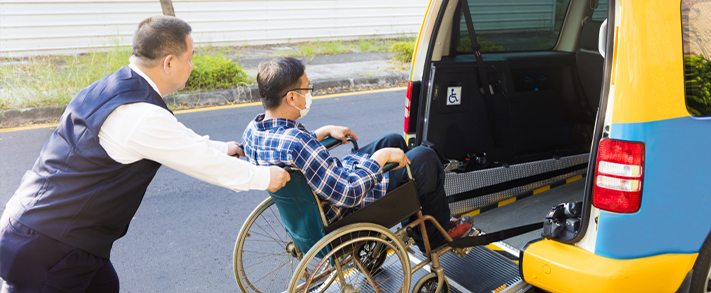
In the modern world, there are plenty of ways to get around for those who are unable to utilise standard methods of transportation. The most significant developments and details of how to use these services are listed below.
Access to transport
Access ramps for wheelchairs are now in place at most public transport hubs, including rail stations, bus depots and even airports, and make it much easier to reach public vehicles.
At sites with multiple floors, or where ramps cannot be installed, easy-access
lifts have taken their place and allow transfers to different levels of the
building. These are simple to use with wheelchair height call buttons, and
specially trained attendants are always available for additional assistance.
Adapted services
Most regular bus services now offer ‘low floor’ vehicles which have no steps and allow the driver to lower the door level to facilitate access. These services also provide reserved seating at the front of the bus, including space for wheelchairs.
Accessible seating is now also available in the vestibule ends of most train
carriages, and several stations also offer a chaperoning service from meeting
you at your vehicle to seeing you safely to your seat. To find out whether your council provides these facilities, consult your local timetable.
Community help
Specific local minibus and taxi services now exist to enable door to door transport where car use is either impossible or impractical.
Personal solutions
In addition to wheelchairs and mobility scooters, it is now possible to purchase specifically adapted cars to allow disabled to drivers to stay on the road. Such vehicles include design features such as rotating seats to facilitate
vehicle entry and exit, as well as simplified controls.
The blue badge scheme
This is a service that provides parking concessions for disabled people, enabling them to park within short distance of where they need to go more easily.
